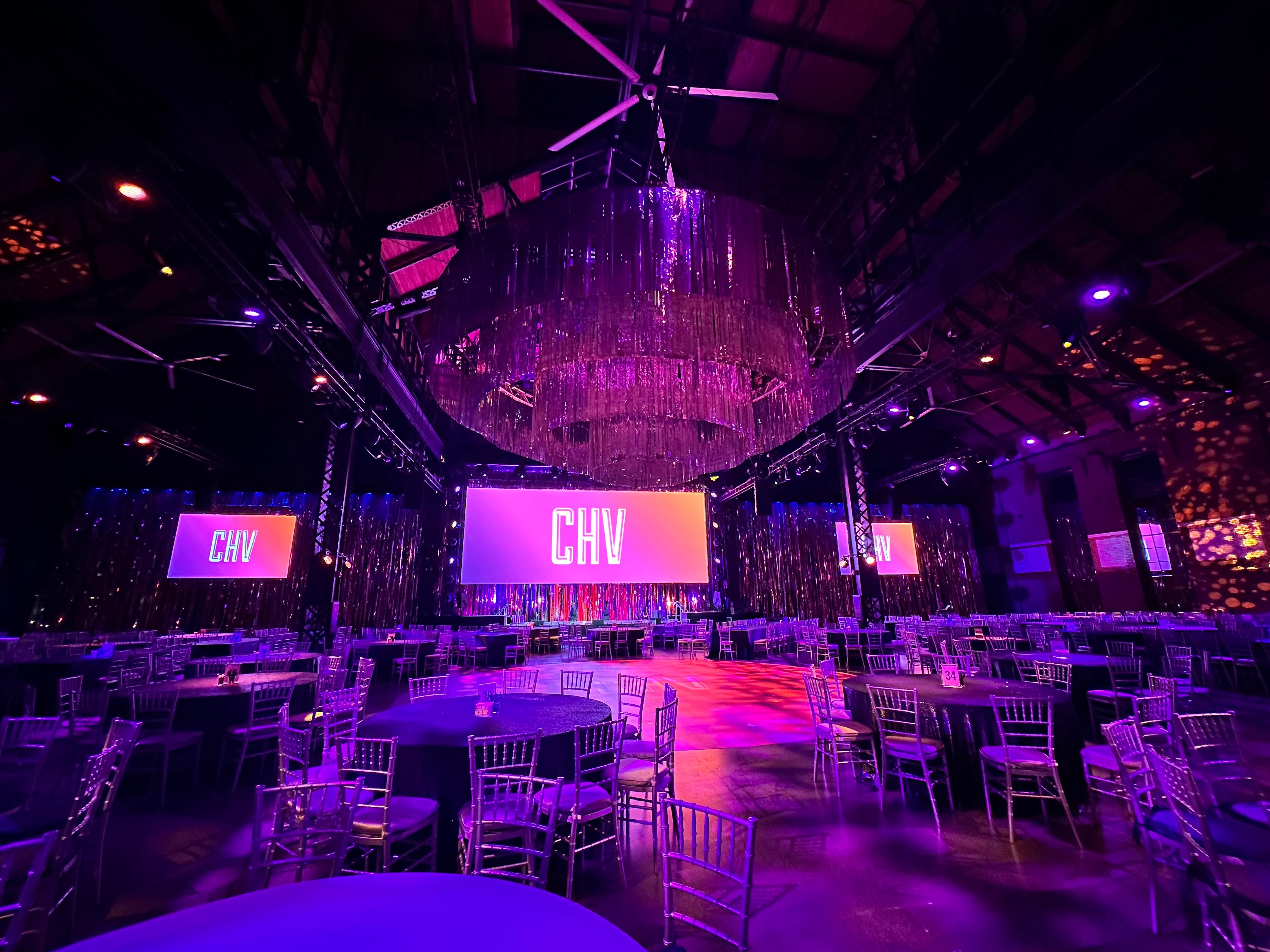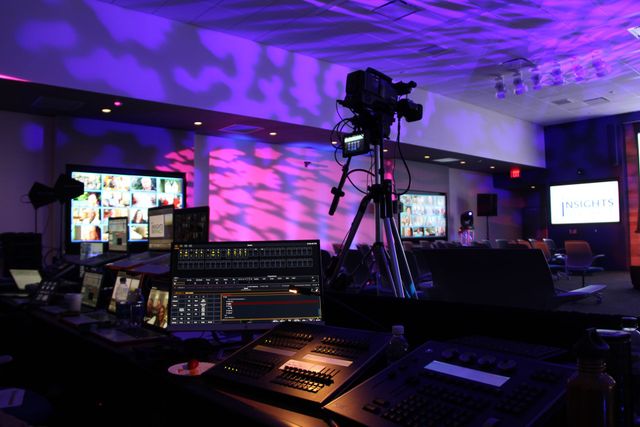Understanding the timeline of projects with production companies in charlotte nc
Comprehending Just How Production Companies Operate: An Overview to Their Process and Offerings
Production companies play an essential function in bringing imaginative visions to life. Their operations incorporate various phases, from the initial idea growth to the final circulation of a project. Each phase calls for careful planning and control to guarantee success. Recognizing these processes can drop light on the complexities behind the scenes. What elements affect decision-making at each stage, and just how do they eventually form the end product?
The Concept Growth Stage
The principle growth phase offers as the structure of any type of effective manufacturing. Throughout this stage, ideas are generated, fine-tuned, and crystallized into a meaningful vision. Production groups take part in conceptualizing sessions, discovering numerous themes and stories that reverberate with target audiences. This phase requires collaboration among producers, writers, and directors, that jointly examine the usefulness and market possibility of these principles.
Secret components consist of developing the target, tone, and style group, which assist the innovative process. Research plays a crucial duty, as teams evaluate trends and target market preferences to inform their choices. Furthermore, preliminary budgeting and resource analyses start, making sure that the concept aligns with readily available abilities - production companies in charlotte nc. By the end of this phase, a strong idea emerges, all set for the succeeding stages of growth. This groundwork is vital for steering the complexities of production, eventually setting the phase for a job's success
Pre-Production Preparation and Sychronisation
After solidifying the idea, production groups move right into pre-production planning and control, an important phase that entails organizing the logistics necessary for bringing the vision to life. Throughout this stage, numerous aspects collaborated, consisting of script completion, casting, place searching, and budget monitoring. Teams develop timelines to guarantee that all facets of the project straighten with the designated shooting routine.
Additionally, production planners protected permits and insurance policy, while liaising with team participants and vendors to validate availability and sources (production companies in charlotte nc). This phase likewise emphasizes interaction, as collaboration among supervisors, manufacturers, and department heads is necessary for smooth operation
Additionally, detailed planning assurances that possible challenges are determined and resolved proactively, reducing interruptions throughout recording. Inevitably, effective pre-production preparation lays the foundation for an effective capturing experience, making certain that all parts are in area to meet the innovative vision.
Production: The Filming Process
Filming transforms the thoroughly planned vision right into truth, recording efficiencies, visuals, and noise in a cohesive way. This phase includes the partnership of different departments, including cinematography, production, and sound layout, each adding to the general aesthetic and narrative. The director overviews the stars, guaranteeing their performances align with the intended emotional tone, while the cinematographer records the activity with thoroughly chosen shots and lighting strategies.

Post-Production: Editing And Enhancing and Completion
Once the recording process is complete, the focus moves to post-production, where the raw video footage is changed right into a sleek end product. This stage entails numerous crucial steps, beginning with editing, where editors sift through hours of footage to pick the most effective takes and construct them right into a systematic story. They function carefully with directors to guarantee the vision is realized.
Audio layout is another critical facet, as audio tracks are improved, music is added, and audio results improve the seeing experience. Color correction follows, assuring aesthetic consistency and enhancing the state of mind of the film. Visual effects, if required, are incorporated flawlessly to produce immersive scenes.
Lastly, the film undertakes a top quality control procedure, checking for any technological problems. This thorough interest to detail in post-production inevitably forms the end product, preparing it for the next phases of release and audience interaction.

Circulation and Marketing Methods
A reliable circulation and marketing method is important for a film's success, as it identifies exactly how commonly the movie reaches its desired target market. Production companies commonly team up with representatives to establish a release strategy, selecting systems such as theaters, streaming services, or digital downloads. A well-timed theatrical release can optimize ticket office revenue, especially when aligned with movie events or seasonal fads.
Advertising initiatives commonly include trailers, social media campaigns, and promotional occasions to generate buzz. Target market evaluation plays a crucial function in crafting tailored messages that reverberate with possible customers.
In addition, collaborations with sponsorships or influencers can enhance visibility. The effectiveness of these approaches is determined with metrics like ticket sales and online engagement, educating future campaigns. Ultimately, a natural circulation and marketing strategy not just enhances a movie's exposure but additionally adds significantly to its total productivity and durability on the market.
Regularly Asked Concerns
How Do Production Companies Secure Financing for Projects?
Production companies safe funding via various methods, including pre-sales, gives, exclusive financiers, crowdfunding, and collaborations with suppliers or workshops - production companies in charlotte nc. These techniques permit them to finance tasks and manage economic risks properly throughout production
What Functions Do Supervisors and producers Play in a Manufacturing?
Manufacturers manage task development, budgeting, and logistics, making certain resources are readily available. Supervisors focus on the innovative vision, guiding actors and team to achieve the preferred imaginative end result, shaping the narrative and total manufacturing quality.
Exactly How Are Casting Choices Made for a Project?
Casting choices are generally made via tryouts, where directors and producers review article actors based on their performance, viability for functions, and chemistry with various other actors participants, frequently influenced by company suggestions or previous cooperations.
What Is the Average Timeline for Completing a Film?
The average timeline for completing a film usually varies from one to 3 years. This consists of pre-production, recording, and post-production phases, with each stage differing substantially based upon task scale and complexity.
Exactly How Do Production Companies Select Places for Shooting?
Production companies select shooting places based on elements like script requirements, budget constraints, ease of access, and aesthetic appeal. They often conduct area precursors to review possible websites and think about logistical elements such as permits and community assistance. ## Recognizing Just How Production Companies Operate: A Guide to Their Process and Offerings.
Production companies play an essential duty in bringing imaginative visions to life. Their procedures include various phases, from the first idea advancement to the final circulation of a job. Each phase requires mindful preparation and sychronisation to guarantee success. Understanding these procedures can clarify the complexities behind the scenes. What factors affect decision-making at each stage, and just how do they eventually shape the end product?
The Concept Growth Phase
The concept growth phase functions as the foundation of any type of successful manufacturing. During this phase, ideas are created, fine-tuned, and crystallized right into a coherent vision. Production groups take part in conceptualizing sessions, checking out numerous styles and stories that resonate with target market. This phase needs collaboration amongst writers, directors, and manufacturers, who collectively assess the expediency and market capacity of these principles.
Crucial element consist of developing the tone, target, and style group, which direct the innovative process. Study plays a necessary role, as teams examine fads and audience preferences to educate their choices. Additionally, preliminary budgeting and source analyses begin, making sure that the principle aligns with available abilities. By the end of this stage, a strong principle arises, ready for the subsequent stages of advancement. This foundation is essential for maneuvering the complexities of production, eventually setting the stage for a job's success.
Pre-Production Preparation and Control
After strengthening the principle, manufacturing groups relocate right into pre-production preparation and control, a crucial phase that includes organizing the logistics needed for bringing the vision to life. Throughout this stage, different aspects come with each other, consisting of script completion, spreading, area looking, and spending plan monitoring. Groups develop timelines to assure that all elements of the job line up with the designated shooting routine.
In addition, manufacturing planners secure permits and insurance coverage, while liaising with team members and vendors to validate schedule and sources. This stage likewise highlights communication, as cooperation amongst directors, producers, and division heads is crucial for smooth procedure.
Additionally, in-depth planning guarantees that possible difficulties are identified and dealt with proactively, minimizing disturbances during filming. Inevitably, effective pre-production preparation prepares for an effective shooting experience, guaranteeing that all components remain in location to meet the creative vision.
Production: The Filming Process
Filming changes the thoroughly prepared vision into truth, catching efficiencies, visuals, and sound in a cohesive manner. This stage entails the collaboration of various departments, consisting of cinematography, production, and sound layout, each adding to the total aesthetic and narrative. The director guides the actors, guaranteeing their performances line up with the intended emotional tone, while the cinematographer records the activity via thoroughly selected shots and lighting strategies.
During filming, routines are tightly followed, as time and sources are frequently restricted. Each scene is fired multiple times to attain the preferred top quality, with attention offered to framing, connection, and sound clarity. The manufacturing group functions diligently behind the scenes, managing equipment, working with areas, and resolving any type of unpredicted difficulties. This dynamic environment cultivates imagination Our site and flexibility, inevitably producing the raw video that will certainly later on be refined in post-production, setting the stage for the end product.
Post-Production: Editing and Finalization
Once the filming procedure is full, the emphasis changes to post-production, where the raw footage is changed into a polished end product. This stage involves a number of essential actions, starting with editing and enhancing, where editors filter through hours of video footage to choose the best takes and construct them right into a systematic narrative. They function closely with supervisors to ensure the vision is recognized.
Sound layout is one more crucial aspect, as audio tracks are fine-tuned, music is added, and sound impacts enhance the seeing experience. Shade adjustment follows, guaranteeing aesthetic consistency and boosting the mood of the film. Aesthetic effects, if needed, are incorporated effortlessly to develop immersive scenes.
Ultimately, the film undergoes a quality assurance process, looking for any type of technological issues. This thorough interest to information in post-production eventually forms the end product, readying it for the following stages of release and target market engagement.
Circulation and Marketing Methods
An efficient circulation and marketing method is vital for a movie's success, as it determines how widely the film reaches its desired target market. Production companies commonly team up with representatives to develop a release strategy, picking platforms such as movie theaters, streaming solutions, or digital downloads. A well-timed theatrical release can get more take full advantage of ticket office income, particularly when aligned with film celebrations or seasonal trends.
Advertising and marketing efforts often consist of trailers, social media projects, and marketing occasions to generate buzz. Target market analysis plays a vital duty in crafting tailored messages that resonate with prospective audiences.
Furthermore, partnerships with influencers or sponsorships can magnify exposure. The performance of these approaches is determined with metrics like ticket sales and online interaction, notifying future projects. Inevitably, a natural distribution and advertising and marketing approach not just improves a film's presence yet also contributes significantly to its total success and durability out there.
Regularly Asked Concerns
Exactly How Do Production Companies Secure Financing for Projects?
Production companies safe funding with numerous methods, consisting of pre-sales, gives, personal investors, crowdfunding, and collaborations with workshops or suppliers. These techniques allow them to finance projects and manage monetary threats successfully throughout production.
What Roles Do Producers and Supervisors Play in a Manufacturing?
Producers oversee job advancement, budgeting, and logistics, guaranteeing resources are offered. Directors focus on the innovative vision, directing actors and staff to achieve the wanted creative end result, shaping the narrative and overall manufacturing top quality.
How Are Casting Decisions Created a Task?
Casting decisions are typically made through tryouts, where supervisors and manufacturers review stars based upon their efficiency, viability for roles, and chemistry with various other actors members, usually influenced by company suggestions or previous cooperations.
What Is the Typical Timeline for Finishing a Movie?
The average timeline for finishing a film commonly varies from one to 3 years. This consists of pre-production, recording, and post-production stages, with each phase varying substantially based upon job scale and intricacy.
Exactly How Do Production Companies Pick Areas for Shooting?

Production companies select recording areas based on variables like script needs, budget restrictions, accessibility, and aesthetic allure. They usually perform area scouts to evaluate prospective sites and think about logistical facets such as authorizations and neighborhood assistance.
After solidifying the concept, manufacturing teams relocate right into pre-production preparation and coordination, a vital phase that includes arranging the logistics required for bringing the vision to life. Production companies select recording places based on aspects like manuscript requirements, budget restrictions, access, and aesthetic allure. The principle growth stage serves as the structure of any kind of effective production. After solidifying the principle, production groups move into pre-production preparation and control, a vital phase that involves organizing the logistics essential for bringing the vision to life. Production companies select recording locations based on factors like manuscript needs, spending plan restraints, access, and visual appeal.